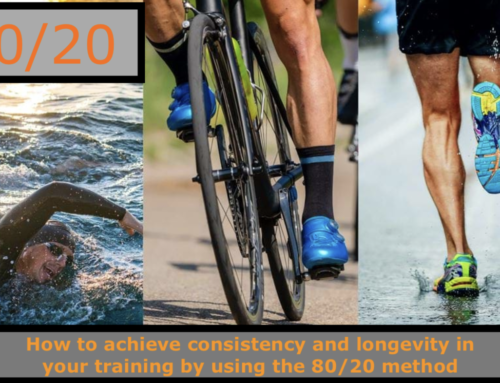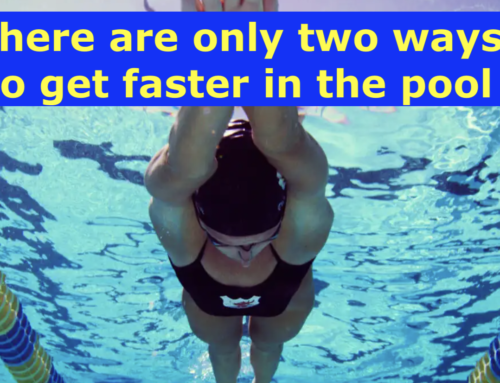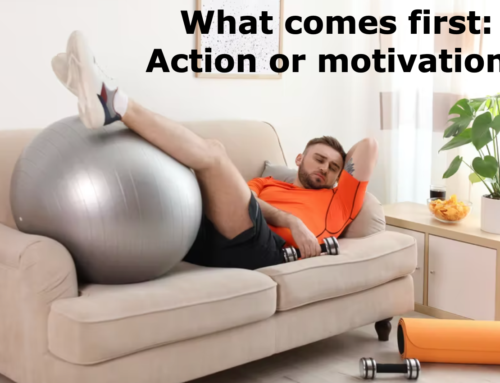I’m about to say something controversial. That’s not new for me but this comment might be for you. Are you ready?
Triathletes should develop a kick to help not just their swimming, but their entire performance.
This would require approximately 10-20% of the metres in each session be devoted to kicking drills. If you regularly swim 2500m in a session then that means roughly 250-500m kicking.
Triathletes generally don’t like, and therefore don’t do, much kicking.
Why?
The arguments against it are many and varied:
- Stiff ankles which makes it difficult for most and impossible for some. I saw one swimmer doing a kick set and actually going backwards.
- The investment of time and effort is not rewarded by a faster race time.
- Heavy legs from all the cycling and running.
- Not kicking in a wetsuit race, so why bother learning?
- The time could be better spent on developing stroke or working on fitness.
I have heard each of these arguments many times before. Each of them has some validity, but I can also provide an equally valid counter point to each.
Triathlon is a sport of compromise. In order to run well, one must have stiff ankles to be able to use the ground forces to generate spring and power for the next stride. The floppy ankles of swimmers do not lend themselves to being a good runner. But a compromise can be found. Unless there is a medical reason for the stiffness in your ankles then it is possible, with regular stretching and mobility work, to improve on what you have. You can also resort to wearing fins (more on this later) as long as your local pool allows it. Fins are fine. It’s not cheating!
Developing a good kick will not directly make you faster in the water, that much I agree with. But most people do something with their legs. Just watch the videos. It might be a flick of the ankle or a quick bend of the knee. It might be once in every 3 arm strokes. I’ve yet to meet an able bodied triathlete who does absolutely nothing with their legs. The issue is drag. The movements I have described above create drag, not momentum. By working on leg mechanics, learning to kick from the hip versus the knee, and having feet stay very close to each other rather than the wide scissor kick we often see, the swimmer can reduce drag massively. This in itself will increase speed.
So, while you may not feel like you are kicking much in a race, you will still be creating unnecessary drag, even in a wetsuit. And what about if you are ever in the position of having to do a non wetsuit swim?
I do not believe in heavy legs, but I do believe that all the cycling and running has an impact. It leads to tight hip flexors which then leads to a lower leg position in the water, and probably seems like heavy legs. You can fix this with more dry land work and hip mobility.
And finally the “time wasted” argument. 15 minutes of kick reps will boost your HR to give you a great aerobic work out (maybe this is the reason why triathletes avoid kicking. It’s actually really hard work!!) It’s not like you need more aerobic fitness, because almost 100% of triathlon workouts are aimed at CV development. Neither does it take away from stroke development. If you do 45 mins of freestyle this is more than enough.
Kicking will benefit your swimming, not hold you back. Your fitness will not suffer, and you may find that a gentle, rhythmic 2 beat kick reduces your drag and allows you to come out of the water feeling fresher, thus saving energy which you can use with greater effect on the bike and run.
Following all of that, this is my 9 point plan for your new kicking programme:
- Work on mobility and flexibility of hip flexors and ankles daily. Start with 5 minutes for each and work up to more.
- Include 10-20% of kicking in each swim workout. Warm ups and cool downs are a good place to start.
- Use fins where possible. It’s not cheating and will give you a feeling of moving through the water.
- Learn to kick from the hips with only a slight movement from the knee. Use the glutes more.
- You may find that vertical kicking gives you a better feel for this to begin with.
- Kicking on your back will help you to master the correct leg mechanics and allow you to see if the knees break the surface of the water.
- Kick on your side with the bottom arm extended in front of you. As well as developing your kick, this will also allow you to feel the correct position to start the catch.
- Begin by completing short intervals of 25m followed by short rests, and alternating the effort level.
- Focus on “getting more lift and reducing drag” rather than “gaining more speed”.
I also think that triathletes should be encouraged to include backstroke, breaststroke, and butterfly in their routines but that’s for another post.







Leave A Comment